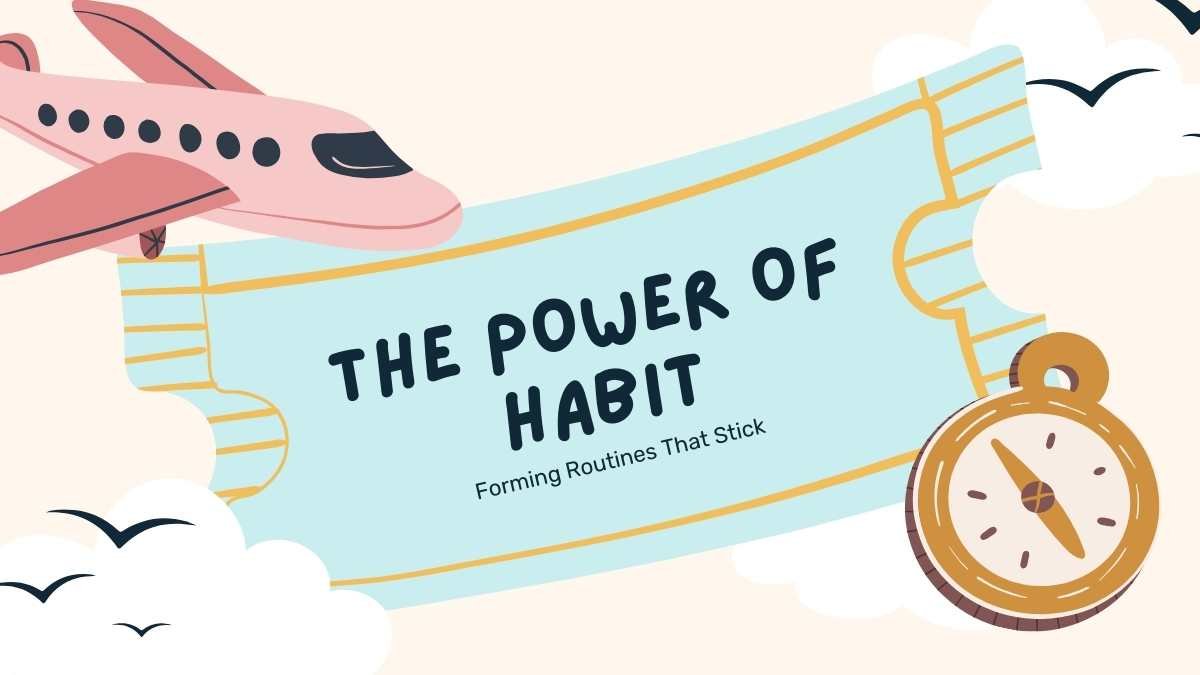In a world constantly vying for our attention, the power of habit stands as a beacon of consistency and growth. Our daily habits shape not just our routines, but also our lives’ trajectories. Understanding and harnessing this power can be transformative. In this extensive guide, we delve into the science of habit formation, offering practical advice and real-world examples to help you create routines that stick.
Understanding the Science of Habit
Habits are the small decisions and actions we perform daily, often without much thought. According to researchers at Duke University, habits account for about 40 percent of our behaviors on any given day.
The Habit Loop
At the core of every habit is a psychological pattern called the habit loop, comprising three elements:
- Cue: A trigger that tells your brain to initiate a behavior.
- Routine: The behavior itself or the action you take.
- Reward: A positive stimulus that reinforces the habit.
Why Habits Matter
Habits, whether good or bad, form the architecture of our lives. Good habits, like regular exercise and healthy eating, can lead to improved health and well-being. Conversely, bad habits can hinder our progress and negatively impact our lives.
How to Form Lasting Habits
Forming lasting habits isn’t just about willpower; it’s about understanding how habits work and setting up systems that make new habits stick.
1. Start Small
Begin with small changes that require minimal effort. For instance, if your goal is to exercise more, start with a 5-minute walk each day rather than an hour at the gym.
2. Identify Your Cues
Recognize the triggers that initiate your current habits. Want to stop checking your phone first thing in the morning? Place it in another room before you go to bed.
3. Create a Routine
Establish a simple and specific action as your new routine. To build a reading habit, for example, read one page of a book every night.
4. Reward Yourself
Choose a reward that genuinely motivates you. After completing your reading session, treat yourself to a favorite snack or a few minutes of leisure time.
Real-World Examples of Habit Formation
Example 1: Exercise Habit
Goal: To exercise regularly.
Small Start: Begin with 10 minutes of exercise each day.
Cue: Set your workout clothes next to your bed.
Routine: Do a quick 10-minute workout every morning.
Reward: Enjoy a delicious smoothie afterward.
Example 2: Healthy Eating
Goal: Improve your diet.
Small Start: Replace one unhealthy snack with a healthy option each day.
Cue: Keep healthy snacks visible and accessible.
Routine: Choose fruits or nuts instead of chips or candy.
Reward: Note how much better you feel after a healthy snack.
Tips to Make Habits Stick
- Be Consistent: Perform your new habit at the same time and place each day.
- Track Your Progress: Use a habit tracker app or journal.
- Find a Habit Buddy: Team up with someone who has similar goals.
- Be Patient: Remember, it takes an average of 66 days to form a new habit.
Overcoming Challenges
Habit formation is not without its challenges. Here are some ways to overcome common obstacles:
- Lack of Motivation: Remind yourself of the benefits of your new habit.
- Forgetting: Set reminders on your phone or use sticky notes as visual cues.
- Resistance to Change: Focus on the positive outcomes and reward yourself.
Conclusion
The journey of habit formation is one of self-discovery and growth. By understanding the science of habits and implementing practical strategies, you can create routines that not only stick but also lead to a more fulfilling life. Remember, the key to habit formation is consistency, patience, and a positive mindset.



